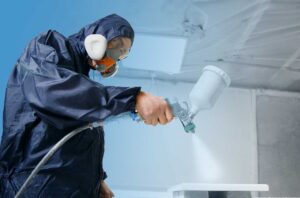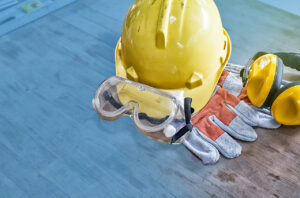The consequences of a fall from height can be severe. Figures recently released by the HSE show that while falls from height were the most common type of fatal accident at work typically accounting for around 28% of accidental deaths, they only tend to represent around 7% of non-fatal injuries (see https://www.sigersonassociates.co.uk/news/deaths-in-the-workplace-rise).
What can go wrong?
Looking at some recent cases prosecuted by the HSE, accidents often involve falls through unprotected fragile roofs or parts of roofs e.g. fragile rooflights, falls from unprotected edges (often roof edges but falls can also occur at other edges e.g. unprotected lift shafts) and the collapse of temporary platforms or access equipment. Inadequate training and supervision of people working at height can also be an issue.
What can be done?
The safest option is to avoid working at height wherever possible e.g. by using extendable tools from ground level rather than climbing a ladder with normal tools. However this is not always practical, when it is necessary to carry out work at height action will need to be taken to prevent falls where possible and minimise the consequences and distance of a fall where the risk can’t be eliminated.
Where work at height is necessary the first step is to make sure that it is properly planned.
When planning for work at height things to consider can include:
- Making sure that people working at height have suitable training, information and supervision;
- Weather conditions;
- Features of the work location e.g. unprotected edges, fragile surfaces, etc;
- Deciding whether it is safe and practical to carry out the work from an existing place of work or by using existing means or whether suitable work equipment will need to be provided to prevent a fall or minimise the consequences and distance of a fall;
- Providing the right equipment;
- Precautions to prevent materials or objects falling from height or if this can’t be prevented providing exclusion zones to keep people away;
- Planning for emergency situations and rescues.
Where equipment is provided for work at height this should give priority to collective over personal protection measures and should be appropriate for the work to be carried out and the risk. Examples of collective fall protection measures can include using scaffolds or tower scaffolds, scissor lifts or other forms of mobile elevating work platform. Examples of personal protection measures can include restraints such as lanyards and harnesses to prevent a person reaching a position where they could fall.
Where falls can’t be prevented then examples of suitable collective protection equipment may include safety nets and crash bags or other soft landing systems, personal protection equipment may include fall arrest systems attached to an anchor point. Where such systems are used your plans will need to consider how you will rescue people who have fallen.
It is important that any equipment provided is assembled or installed correctly and inspected at suitable intervals to make sure it has not deteriorated.
Exactly what level of planning and competence is required will depend on individual circumstances. Some low risk work may just require simple precautions and on the job training, while more complex work e.g. designing and assembling scaffolding systems will require a greater degree of technical competence and training.
Some work can be safely carried out using ladders, typically such work should be low risk short duration work less than 30 minutes duration.
Please speak to your normal PIB Risk Management contact if you would like more information about working at height.

HSE Launch Motor Vehicle Paint Spraying Campaign

Lifting Equipment and Pressure Systems: A Call For Evidence

Making PPE Fit As Standard

What To Do When It Isn’t Business As Usual

Taking Slurry Safety Seriously
